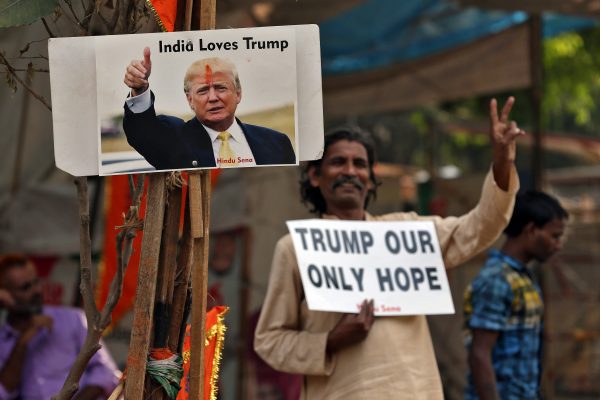Given the many uncertainties posed by Trump’s ‘America First’ foreign policy rhetoric and what we have seen of the administration’s actions, the way forward for India’s diplomats, businesses and citizens in key geo-economic and geopolitical areas is filled with challenges. But India can seize this as an opportunity to advance its domestic capacity, expand and strengthen its trade relations, progress climate change action and take a leading role in the Asia Pacific region.
India’s focus must be to design and operationalise a clear strategy through a transparent and inclusive process to engage in open and fair trade and cooperation bilaterally, regionally and multilaterally.
Bilateral relations between the United States and India are expected to remain cordial in the short-to-medium term. But the Trump administration’s ‘America First’ strategy, which emphasises firm reciprocity, is likely to create indirect effects on trade, climate change and regional connectivity.
While Trump’s trade strategy is still emerging, the recent 2017 Trade Policy Agenda seems to confirm the administration’s transactionalist approach to trade negotiations. Despite the administration’s focus on bilateral trade agreements, of which India must take advantage, India will need to widen its reach on trade to hedge against such uncertainty.
Top potential trading partners that India should pursue include the United Kingdom, Canada, Mexico and Peru, as well as economic groups in Latin America, Sub-Saharan Africa and Central Asia. Also, ensuring an ambitious Regional Comprehensive Economic Partnership agreement will be vital for India to gain greater market access while upgrading its trading standards.
Taking into account the backlash against globalisation witnessed in many parts of the world, a country like India that has gained much from open trade and multilateralism will have to work more inclusively with its marginalised population at all levels to bring those communities into the fold to fairly distribute the benefits of global economic growth. Comprehensive consultations on trade policy as well as effective domestic assistance programmes for retraining, relocation and unemployment will be required to ease inevitable transition challenges for workers and families.
The free movement of professionals from India to the United States, which accounts for half of US permanent work migration, has been a bilateral contention for some time. Despite a seemingly positive meeting by Indian Foreign Secretary Subrahmanyam Jaishankar with Trump’s Cabinet in early March, the administration and Congress are taking action to slow or block entrance of skilled workers into the United States. This could severely impact India’s employment and remittances as well as impede diplomatic ties between the two nations.
India’s impacted industries, along with diplomats, must clearly demonstrate to the Trump administration that US skilled and unskilled domestic labour, the kinds of jobs that Trump promised to bring back, will not fill the gap that Indian professionals currently fill in the US labour market.
Considering its advances in and access to renewable technology, India has the opportunity to be a champion in the industry and to address the serious challenges of climate change. To start gaining a foothold, India can first push its domestic industry to develop solar technology and open up to attract greater FDI, while planning long-term investments in start-ups. Small scale aggregators can ensure cost-effective procurement for solar products. Thus, this approach may be a viable option financially to fend off the challenge of limited funding commitments from the United States.
With the potential challenges from Trump’s proposed budget cuts, possibly leading to a withdrawal of US leadership in the region, a clearly designed strategy will provide the necessary and beneficial policy predictability for India and its neighbours. In the Asia Pacific, India should advance itself as a cooperative partner with an acute understanding of the needs of developing countries. Historical US allies can look to India as a strong partner in the region on economic integration, climate change action and trade — both bilaterally and in regional arrangements.
Change seems to be inevitable. Given the current churning in the international order, the responsibility of promoting norms for equitable economic growth and development at home and abroad will now fall on countries like India. Thus, India’s attention must remain on promoting mutually beneficial trade agreements and cooperation bilaterally, regionally and multilaterally. Guided by a transparent internally-based strategy, India can brave through and indeed thrive in a changing world.
Pradeep S Mehta is Secretary General and Kyle Cote is Policy Analyst at CUTS International.
This is a digest of a CUTS International working paper titled ‘The Trump Presidency and Future of Indo–US Relations’. The full paper is available here.

